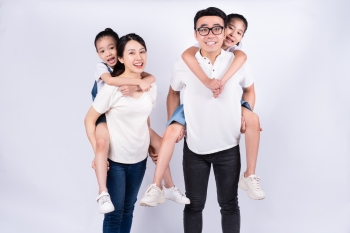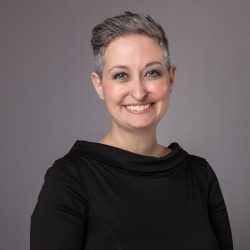
The Impact of Internal Beliefs and External Perceptions of Filipino-Americans in Determining Access to Mental Health
Filipino American Mental Health: Research Paper Topic
To understand the need for mental health services among Filipino-Americans and identify barriers around access, specifically examining the influence of cultural identity and how external stereotypes contribute.
Filipino American Mental Health: Main Argument
Within the umbrella of Asian-Americans, Filipino-Americans are often stereotyped as a “model minority” due to their deeply rooted cultural propensity towards achievement. Externally, the value of achievement is viewed as a symbol of success; however, in reality, the pressure to achieve can be detrimental to mental health. Values including perfectionism and self-judgment develop as a result of the achievement mentality and inevitably lead to feelings of anxiety and depression. While cultural identity influences need for mental health services, it also serves as a hindrance to access those services. Culturally, acknowledging problems and expressing emotions are discouraged. Therefore, in instances where an individual is in need of service, the person may be unaware of their issue, or resistant to asking for help. Additionally, Filipino-Americans may be overlooked as a population in need of treatment based on their “model minority” stereotype.
Filipino American Mental Health: Importance of Research
According to the National Alliance on Mental Illness, approximately 71% of Asians are affected by major affective disorders, such as depression; however, Asians are among the least served populations within mental health. Only 4.8% of Asians currently access mental health services, compared to 16.4% of Caucasians, 15.7% of Native Americans, 8.5% of African Americans, and 7.4% of Hispanics. While understanding the discrepancy between need and access is important, it is equally important to understand the subset of Filipino-Americans, as most research either focuses on Asians who have immigrated to the United States or represents a collective study on Asian-Americans.
While there are many similarities between different Asian-American ethnic subgroups, each group has an individual heritage that makes it unique. In this paper, I will be examining mental health and cultural identity within the Filipino-American community. Studies show that at 27.3%, Filipino-Americans are the second-highest group to experience depression among East Asian Americans (Tompar-Tiu, 1995, p. xvi). At 45.6% Filipino-Americans also demonstrate the highest rates of suicidal ideation in the United States (President’s Advisory Commission on Asian Americans and Pacific Islanders, 2001). However, while the need for mental health exists within the community, reports show that Filipino-Americans seek mental health services at a much lower rate than the general population (David, 2013, p. 153).
As it stands, there is a limited amount of research on the mental health of Filipino-Americans. Cultural characteristics can be analyzed to better understand and predict behavior. Though Filipino-Americans are likely to share collective traits with other Asian-Americans, the Philippines’ unique history plays a role in shaping the identity of the community. In this paper, I will first explore the impact of colonization on identity and self-worth. I will then examine Filipino-American cultural values and the relevance of the “model minority” stereotype to determine potential drivers for mental health. Finally, I will take a comprehensive look at the barriers that hinder access to mental health services. By looking at Filipino-Americans through a cultural and historical context, I hope to understand how race and identity impact access to mental health within the Filipino-American community today.
Filipino American Mental Health: The Impact of Colonization
Discrimination exercised against Filipino-Americans can be traced back to 425 years of colonization. Pomeroy details a conversation in which President McKinley justifies occupation claiming, “We could not leave them to themselves – they were unfit for self-government…there was nothing left for us to do but to take them all, to educate the Filipinos, and to uplift and civilize and Christianize them” (Pomeroy, 1974, p. 7). While this statement could be interpreted as well-intentioned, it is belittling and does not account for the strengths and capabilities of the Filipino people. McKinley presents a case of helplessness; however, looking at historical events provides a different perspective.
Historically, the relationship between the Philippines and United States is complicated. Though the Philippines was originally occupied by Spain, the country was ceded to the United States in the Treaty of Paris after the Spanish-American war of 1898. Resisting American rule, a group of Filipino nationalists led by Emilio Aguinaldo fought for sovereignty in the Philippine-American war. The United States prevailed and established the Philippines as an American colony in 1902. Overtime, the United States slowly extended political rights to the Filipino people and eventually promised to grant the nation independence after a ten-year transition period in the Tydings-McDuffie Act of 1934. Following World War II, the Philippines was finally granted independence in 1946 through the Treaty of Manila.
(Office of the Historian).
History provides a cursory view; to further develop my understanding of the influence of colonization, I conducted a survey among 15 Filipinos who had memories of American occupation. While some lived through colonization firsthand, others had recollections from the stories of their parents. All respondent memories stem from the final period of American occupation. The majority spoke highly of the United States based on their ability to protect the Filipino people from invaders during World War II, including the Japanese.
Overall, three themes emerged among the native Filipinos: notions of progress, positive regard towards the United States and the perspective of superiority. In discussing the impact of colonization, the majority highlighted access to a “standard,” “quality” education as the main benefit. (Soriano, 2016) Many also took pride in their ability to speak English well. One native Filipino recounted her experience in learning the language. Of the experience, she notes:
“[Americans] taught us how to read. I love reading and am an avid reader. We were not allowed to speak Tagalog in school. It had to be perfect English. If you were caught talking Tagalog, even a single word, you were penalized 5 cents…which was good” (Soriano, 2016).
Others spoke of the benefits of modernization, specifically in the realm of economics, technology and access to consumer goods. A minority also spoke about the influence of American values, noting that they gained more awareness of freedom of speech and the importance of being open-minded.
Using World War II as a frame of reference for the relationship, the majority also described their relationship with the United States positively. Words like “supporter,” “friend,” “ally,” “defender,” and “big brother” were used by respondents (Soriano, 2016). While there was discussion around the support of the United States, there was also significant mention of the nation’s strength. “Powerful” was the foremost descriptor used to describe perceptions of the United States. Many spoke of the importance and strength of their colonizers, however, some discussed issues that arise from the power dynamic (Soriano, 2016). Several referenced the concept of “colonial mentality,” which referred to the tendency of Filipinos to “rely heavily on Americans” and “believe anything coming from the U.S. is the best quality” (Soriano, 2016). A minority also expressed that the Philippines would be “more nationalistic,” if the country had not been colonized (Soriano, 2016).
The issue of “colonial mentality” was further enforced in existing literature. At surface value, colonial mentality appears to just be a preference for Western ideals, cultural traditions, and education (Tompar-Tiu, 1995, p. 6). However, by conceding to colonial mentality Filipinos acknowledge the superiority of others, and accept their position as inferior by doing so. E.J.R. David, an expert in Filipino culture contends: “It is an automatic and uncritical rejection of anything Filipino and an automatic and uncritical preference for anything American…it may operate automatically without intention of control…” Messages of inferiority, such as ‘white is beautiful,’ ‘white is intelligent,’ and ‘white is powerful,’ exist on an unconscious level and operate independently from the person’s awareness (David, 2013, p. 81). Once the messages are absorbed, they become ingrained which can ultimately reduce self-esteem and cause depression.
While the concept of “colonial mentality” developed during American occupation, feelings of internalized oppression prevail among Filipino-Americans today. Feelings of inferiority are passed down generations through covert and overt manifestations (David, 2013, p. 62). The cross-generational impact is eluded to in existing research; however, it is not heavily emphasized. Similarly, most of the literature that exists focuses on the experience of first generation Filipinos, rather than Filipino-Americans. To enhance my understanding of this sub-segment, and determine the extent with which Filipino culture is passed down through generations, I conducted an additional research study among Filipino-Americans. For the study, 29 1.5 and 2nd generations Filipino-Americans from across the United States offered their perspective on Filipino culture, as well as their attitudes towards mental health.
Surprisingly, several of the Filipino-Americans surveyed were familiar with the concept of “colonial mentality”. While some spoke of the idea in a theoretical sense, others provided concrete examples of how this negative pattern of thinking manifested in their upbringing. One Filipino-American states, “Self-doubt stems from colonial mentality” (Soriano, 2016). Another Filipino-American recounts the messages she received during her childhood, “My mother always told me not to get too dark, to always pinch my nose to make it pointy like white people's, etc. Popular culture prefers the fairest skin” (Soriano, 2016). “Colonial mentality” may be historically rooted; however, these notions of inferiority are passed down and reinforced both inside and outside the household, ultimately affecting the self-esteem of future generations.
Filipino American Mental Health: Cultural Identity and the Relevance of “Model Minority”
In surveying Filipino-Americans, I wanted to broadly understand the influence of their native heritage on personal development. I merged the findings of my primary research with information I gleaned from secondary sources to gain a comprehensive understanding of the connections between cultural identity and mental health.
One strong theme that emerged was the pressure to conform to parental expectations.
At 92.7% “family-oriented” was identified as the characteristic most connected to Filipino heritage (Soriano, 2016). One Filipino-American suggests that “the emphasis is on the group rather than the individual. There is this notion of sacrifice for your family” (Soriano, 2016). Another Filipino-American explains, “a deep love for family leads to a strong desire to live up to expectations” (Soriano, 2016). Within the survey, 66% of individuals identified with needing to please their parents. Another Filipino-American explains, “I’m cognizant of where my parents came from as immigrants and try to appreciate what they sacrificed to give me a better life here” (Soriano, 2016).
The importance of family in Filipino culture is reinforced in existing literature. Richard L. Dayringer notes that “individual identity is understood within the context of family” (Dayringer, 2002, p. 14). The cultural concept of pakikisama (“acceptance”/”conformity”) provides additional context (Root, 1997, p. 281). Filipino-Americans who practice pakikisama maintain harmony by making decisions that please the group and refraining from behaviors that could displease or hurt others (Nadal, 2011, p. 40).
Other research speaks to the “acculturative stress” that can occur between Filipino-Americans and their Filipino-born parents. (Nadal, 2011, p. 53) Kevin Nadal, an expert in Filipino psychology explains the conflict between pleasing family and satisfying individual needs. He states, “A Filipino American may be taught Filipino values of being respectful and compliant regardless of the situation, American values might teach a person to be individualistic, argumentative, verbal, and to always speak one’s mind” (Nadal, 2011, p. 53). While this is true in Filipino culture, the concept of intergenerational conflict occurs among all families who deal with the clashing of traditional values and more progressive views.
The idea of pleasing the family aligns well with the broad concept of “model minority”. “Model minority” is a stereotype used to describe Asian-Americans based on their dedication to hard work and achievement, which subsequently results in higher levels of education and higher household income than that of the general population. The Filipino-Americans sampled for the survey reflect this stereotype of academic achievement; 66% obtained a Bachelor’s Degree and 24% obtained a Master’s Degree or higher, demonstrating the prevalence of Filipino-Americans in higher education (Soriano, 2016). With regard to values, 86% of the survey identified as “hardworking” and 66% claimed that they were focused on achievement. Existing data also demonstrates that the Model Minority stereotype is applicable to Filipino-Americans. Research shows that Filipino-Americans have a higher median family income and the lowest poverty rate among all Asian-American groups and the general population (Nadal, 2011, p. 141).
The issue with living up to the “model minority” stereotype, is that it is a significant contributor to mental health based on the stress that comes from constantly imposed pressure. While a lot of research has been conducted around the negative psychological impact and parental pressures involved in developing an achievement mentality, they are broadly focused on the Asian community. Filipino-Americans are included in the samples; however, only a small proportion are represented.
One qualitative study conducted among 18 mental health service providers who work with Asian-American youth confirms that the pressure to live up to the model minority stereotype cultivates stress within individuals. According to Ariane Ling, the study identified familial academic expectations as a significant stressor; many “struggled to balance their own expectations with those of their parents” (Ling, 2014, p. 30). Another study, conducted by Sunmin Lee focused on the experience of 1.5 and 2nd generation Asian-Americans (Lee, 2008, p. 148). In this study, “pressure to meet parental expectations” was identified as the foremost source of stress. Lee posits that “Asian-American parents expect their children to succeed academically and strive for certain career paths to fulfill expectations…being a ‘good’ son or daughter often revolves around academic success and achievement of high status jobs” (Lee, 2008, p. 148). While family pressure is significant, Paul Kim also identified social pressures as equally detrimental in a study involving 106 Asian-American students. Students within the study maintained that reinforcement of the model minority stereotype among their peers caused additional distress (Kim, 2014, p. 98).
While most studies highlight the negative consequences of the “model minority” stereotype, one study conducted by Lisa Kiang found that “model minority” status can protect Asian-Americans (Kiang, 2015, p. 1366). Kiang conducted a multiwave study with 159 Asian-American adolescents. The study found a positive correlation between “model minority” stereotyping and decreased discrimination. Those who were considered a “model minority,” also demonstrated higher perceived academic performance, positive relationships, and increased self-esteem (Kiang, 2015, p. 1366).
Though Kiang’s asserts that the “model minority” stereotype can reduce prejudices, the issue of racial discrimination faced by the Filipino-American community occurs in many different forms. According to the Children of Immigrants Longitudinal Study, approximately two thirds of Filipino high school students report experiencing some form of racial and ethnic discrimination (Espiritu, 2003, p. 180). In addition to experiencing racism within society, Filipino-Americans also face discrimination among other Asian-Americans. Filipino-Americans are considered inferior to other East Asians due to their darker skin tone (Nadal, 2010, p. 10-11). Lack of visibility of Filipino-Americans is another form discrimination. One Filipino-American surveyed explained, “It doesn’t help that being a Filipino in the US means I don’t matter…we are underrepresented in the media and the government” (Soriano, 2016). Another Filipino-American interviewed by Nadal states, “You seldom learn about Philippine history…We watched a movie about blacks sitting in the back of the bus and whites in the front and I was like, “Okay, where did we sit? In the middle?” You see, even in films, just black or white. You never see Filipinos” (Nadal, 2011, p. 193). The impact of discrimination on mental health is significant. Research shows that “internalized hatred or self-deprecation” is the unfortunate outcome of discrimination (Nadal, 2010, p. 10-11). Lee argues that, “perceived discrimination may lead to sadness which impacts worldview, decreases feelings of control and impacts self-esteem” (Lee, 2008, p. 147).
Although the model minority stereotype represents a significant stressor for many, secondary research also presents that it is not always relevant or representative of the issues faced by the Filipino-American community. Filipino-Americans of a lower-socioeconomic class face an entirely different set of personal challenges. While the number of Filipino-Americans with a bachelor’s degree is double that of the general population, research shows that Filipino-Americans experience higher rates of high school dropout than other East Asian Americans and that only 27.6% of Filipino-Americans have a high school diploma or less (Nadal, 2011, p. 143). Sexual health is another area of concern within the community, as Filipino-Americans show higher rates of HIV/AIDS than other Asian-Americans (Nadal, 2011, p. 139). Aurora Tompar-Tiu builds on the issue of sexual health with the example of teenage pregnancy. Of the 2.9% of teenage births in San Francisco, 1.9% were to Filipino-Americans, compared to 1.4% of other Asians and 1.1% of Caucasians (Tompar-Tiu, 1995, p. 93-94). Tompar-Tiu also raises the issue of domestic abuse, stating that children may fall victim to traditional disciplinary measures practiced in the Philippines including, “spanking, belting, scolding, and threatening” (Tompar-Tiu, 1995, p. 90).
Filipino American Mental Health: Barriers to Access
In addition to assessing cultural values, the Filipino-Americans featured in my study were also asked about their perceptions of mental health and the messages they received about therapy from their family. A total of 55.6% of the Filipino-Americans surveyed for this project identify “keeping personal matters private” as a characteristic they associate with their Filipino heritage. One Filipino-American recalls, “No one in my family has attended therapy -- at least, not out loud. The message I received was, "You deal with your problems, but getting professional help is not necessary (and if you do, we don't talk about it)" (Soriano, 2016). Another states, “to hear that someone saw a therapist evoked uneasiness, covered by a nod and raised eyebrows, and the silent assumption that they weren’t strong enough to help themselves or supported enough to have loved ones help them through” (Soriano, 2016).
Shame is a significant barrier that prevents Filipino-Americans from accessing mental health services. Within Filipino culture, hiya represents the concept of “devastating shame” (Dayringer, 2002, p. 13). When conducting secondary research, I found that many Asian-American cultures believe that an individual’s mental illness reflects on the entire family (Han, 2015, p. 2). According to Lee, Asian-Americans often attempt to hide, neglect, or deny mental health issues because it is considered “taboo” to discuss (Lee, 2008, p. 147). Han posits that many Asian-Americans attempt to manage their emotions through self-control, avoidance, and social withdrawal rather than using professional help to address problems (Han, 2015, p. 2). Similarly, many Filipinos believe in the power of the cultural concept of in lakas ng loob (“inner strength”) to overcome struggles and empower themselves (Nadal, 2011, p. 121). Cultural mistrust was also identified as a barrier to accessing therapy in secondary research; however, this concept was more relevant to first generation Filipinos rather than Filipino-Americans.
While cultural stigma is a significant barrier to services, 62% of the Filipino-Americans surveyed also stated that they had either gone to or would consider going to therapy (Soriano, 2016). However, the majority who accessed services did so because they were prompted by a crisis issue including, trauma, divorce, adoption issues, suicidal tendencies and eating disorders. Few sought services based on general anxiety and/or depression. Individuals who were more comfortable seeking services had more exposure to mental health as a normalized concept, based on having family in the medical field or knowing others who benefitted from therapy.
One Filipino-American notes:
“I saw peers whom I identified with go to therapy, and was able to put myself in their shoes and see that it’s just plain ol’ good for you – you don’t have to be “officially broken”…
Close friends casually mentioned going to therapy as easily as going grocery shopping –
that was a huge social cue that if they didn’t find it a big deal to talk about, why would I make it a big deal in my own head?” (Soriano, 2016).
Filipino American Mental Health: Assessment of Initial Argument
When initially approaching the subject of Filipino-American access to mental health, I grounded my hypothesis in the idea that the “Model Minority” stereotype acts a significant contributor to the development of mental health issues among the Filipino-American community. I hypothesized that the Philippines history of colonization created deeply ingrained feelings of inferiority, which contribute to the cultural pressure to achieve and also hinder individuals from speaking up about their problems.
While there is some truth to my argument, the focus on “Model Minority” is too narrow in scope. The parental and societal pressure for Filipino-Americans to live up to “Model Minority” stereotype exists; however, there are several other issues impacting the Filipino-American community, including overt racism and poor life circumstances.
The idea that low self-esteem is derived from colonization is possible, but there is no evidence that directly proves this correlation. Understanding the long-term impact of colonization is difficult based on the Philippines unique history of colonization. The perspective developed within this paper reflects the latter part of American colonization, when the presence of United States was well-established. The native Filipinos I spoke to had many positive accounts of the United States based on the role the nation played in protecting the Philippines during World War II. Understanding the mindset of the people who lived through the first stages of occupation after the Philippine-American may have yielded drastically different findings. Moreover, this paper does not address the Philippines’ relationship with their original colonizer. Spain colonized the Philippines for 333 years prior to American occupation. Most of the research I encountered focuses on the dynamic between the relationship with Americans, making it challenging to truly understand the deeply rooted impact of colonization.
Within the surveys, native Filipinos directly spoke of and eluded to a general feeling of “reliance” on the United States. The dynamics of this relationship are interesting from a psychological perspective. Learning about this raised questions about the cultural development of codependency within the Filipino community. Codependency is defined as “a psychological condition or a relationship in which a person is controlled or manipulated by another” (Merriam Webster). Being accepting, generous, and compliant are characteristically generally associated with being Filipino. Codependency and submissive attitudes are known to occur in Filipino culture. Having completed this research, I question the pervasiveness of codependency, as well as the origin and development of the problem.
In thinking about the impact of colonization on self-esteem, I am left with more questions than answers. When I first developed my hypothesis, I imagined that the experience of the Filipino people with Americans would be more overtly oppressive. The only negative anecdote I encountered was the incident a survey participant shared about being punished for speaking her native language. What struck me was the fact that the woman addressed the incident so nonchalantly and actually viewed the incident as beneficial rather than detrimental in preserving her culture.
Understanding that feelings of inferiority is a result of internalization was shocking and heartbreaking. I was unfamiliar with the term “colonial mentality” before this study. Surprisingly, the concept not only exists in literature; it is known and understood by many Filipino and Filipino-Americans. Existing research confirms that an overvaluing of all things American leads to Filipinos devaluing of themselves and this notion of inferiority; however, there is little understanding of how that internalized oppression crosses generations and translates into everyday life. A minority of references speak to feelings of inferiority in relation to standards of beauty. Research fails to address the mental and emotional ways in which this feeling of inferiority translates. I am interested in understanding the depths of this insecurity and what it means for someone personally; how it shapes their view on themselves, their place in the world, and ultimately the path they choose in life e.g. Model Minority. In my original argument, I theorized that self-judgment and perfectionism developed based on feelings of inferiority. Gaining an understanding of cultural issues is essential because it provides perspective on the specific issues that can be addressed and worked on directly.
In terms of barriers to access, my hypothesis that Filipino-Americans practice emotional repression appears to be correct. Interestingly enough, while many sources list pertinent cultural characteristics that may impact access to mental health, few explore the origin of these norms. Understanding barriers are equally important, as they can help us understand what we need the issues we need to overcome to ensure that Filipino-Americans know about mental health services and feel comfortable and safe accessing them.
Filipino American Mental Health: Assessment of Sources
While research about the mental health of Filipino-Americans may be limited, the sources that are available provide helpful context and are able to strongly identify cultural issues that contribute to the need for mental health services, along with other issues faced by the community. Qualitative sources were most insightful as they provided more meaningful context, which is useful in studies with a stronger focus on psychology.
Conducting primary research was incredibly helpful in enriching my perspective. While the surveys distributed among native Filipinos provided insight into their perceptions of the United States and how it may have shaped their identity, it did not deeply probe into cultural values and characteristics. Asking about the formation of those values would have also provided additional insight. Additionally, it would have been interesting to compare that data with the findings from the Filipino-American survey.
In retrospect, there are several things I would have done differently within my research study of Filipino-Americans. The number of questions in my survey erred on the conservative side based on time limitations. The survey was also structured with an emphasis on understanding cultural characteristics and attitudes toward mental health services. When asking about exposure to mental health services, I did not structure my question well. The question posed to respondents was: “Have you ever been in therapy or considered going to therapy?” Rather than broadly asking yes or no, it would have been more advantageous to create three different categories: who has been to therapy, who has never been but considered therapy, who would never even consider therapy. If I were to reconstruct the survey, I would also include questions that directly address anxiety and depression. The questions I would hope to ask include: Have you ever experienced anxiety? Have you ever experienced depression? How often do you experience anxiety/depression? What causes your anxiety/depression? Where do you think your anxiety/ depression come from? Though I chose to conduct surveys based on time restraints and geographic restrictions, I would have loved to conduct in-person qualitative research to better connect with respondents, with time to delve into and learn about their individual experiences regarding their upbringing, experience with mental health and perceptions about therapy.
Filipino American Mental Health: Future Implications
Broadly, there is an opportunity to do more research to deepen our perspective of the Filipino-American community and raise awareness about the needs of this overlooked group. Although some authors offer suggestions for potential solutions, there is an opportunity to develop more insight on how to overcome the barriers of access. With regard to mental health, many of the sources detail depression; however, few detail other mental health disorders, such as anxiety. Additionally, conducting research with Filipino-Americans who have gone to or experienced therapy would be particularly helpful. By understanding their experience, we can gain more insight into effective interventions. There is much to learn about their relationship with therapy, including: sources of encouragement for seeking services, benefits reaped from therapy and potential motivators that can be used to reach out to others.
From an organizational standpoint, it is important for teachers, social workers and therapists to help normalize the concept of mental health. In the last couple of years, there have been a handful of movements to normalize mental health. Journalists have published articles around the importance of treating mental illness as seriously as physical illness. Similarly, grassroots social media initiatives have also taken root. In 2015, individuals on Instagram took antidepressant selfies to fight the stigma on mental health. It is important to have these types of conversations in the classroom and to discuss the benefits of obtaining mental health services in terms to help with personal progress, processing and the development of self-esteem.
It is equally important to receive training on how to identify warning signs among populations, taking into account the impact of culture on behavior. We need to move away from looking at an individual based on superficial factors like economic and academic status. It is in our best interest, and the interest of others to treat each person as an individual, looking at them in their entirety – their happiness, receptiveness to other people, comfort in asserting themselves, relationships at home, etc.
While we can course-correct, I am a big believer in working towards prevention. Creating initiatives within schools and communities can be implemented early on. Awareness campaigns that emphasize anonymity and encourage the benefits of therapy would be particularly helpful. All students should be mandated to receive counseling services. Regardless of personal circumstance, everyone could stand to benefit, whether they are dealing with something personally, at home, or at school.
Filipino American Mental Health: Resources
David, E.J. (2013). Brown Skin, White Minds. NC: Information Age Publishing, Inc.
David, E.J. (2010). Cultural Mistrust and Mental Health Help-Seeking Attitudes Among Filipino Americans. DC: American Psychological Association.
Dayringer, R.L. (2002). International Perspectives on Pastoral Counseling. CA: Haworth Pastoral Press.
Espiritu, Y.L. (2003). Home Bound: Filipino American Lives Across Cultures, Communities, and Countries. CA: University of California Press.
Han, M. & Pong, H. (2015). Mental Health Help-Seeking Behaviors Among Asian American Community College Students: The Effect of Stigma, Cultural Barriers, and Acculturation.
MD: John Hopkins University Press.
Kiang, L. & Witkow, M.R. (2015). Model Minority Stereotyping, Perceived Discrimination, and Adjustment Among Adolescents from Asian American Backgrounds. NY. Springer Science+Business Media.
Kim, P.Y., Lee, D. (2014). Internalized Model Minority Myth, Asian Values, and Help-Seeking Attitudes Among Asian American Students. DC: American Psychological Association.
Lee, F.L. (1991). The Relationship of Ethnic Identity to Social Support, Self-Esteem, Psychological Distress, and Help-Seeking Behavior Among Asian-American College Students. MI: UMI.
Lee, Sunmin, et al. (2008). Model Minority at Risk: Expressed Needs of Mental Health by Asian American Young Adults. NY: Springer Science+Business.
Ling, A. & Okazaki, S. (2014). Challenges in Meeting the Mental Health Needs of Urban Asian American Adolescents: Service Providers’ Perspectives. NY: Springer Science+Business.
Nadal, K.L. (2011). Filipino American Psychology: A Handbook of Theory, Research, and Clinical Practice. NJ: John Wiley & Sons, Inc.
Nadal, K.L. (2010). Overcoming the Model Minority Myth: Experiences of Filipino American Graduate Students. Research Gate.
Office Of the Historian. The Philippine-Americna War. Retrieved from: https://history.state.gov/mile...
Pomeroy, W.J. (1974). American Made Tragedy, Neo-Colonialism & Dictatorship in the Philippines. NY: International Publishers.
Root, M.P. (1997). Filipino Americans: Transformation and Identity. NY: SAGE Publications, Inc.
Soriano, J.M. (2016). Community Research Survey: The Filipino-American Community.
Soriano, J.M. (2016). Interviews Among Natives in the Philippines.
Tompar-Tiu, A. & Sustento-Seneriches, J. (1995). Depression and Other Mental Health Issues: The Filipino American Experience. CA: Jossey-Bass Publishers.
You can call therapists directly by finding their phone numbers on their profile, or you can bypass the wait time and schedule directly online. If you prefer talking to a therapist first, you may call (215) 922-LOVE (5683) ext 100 to be connected with our intake department. Lastly, you can call our Director, “Alex” Caroline Robboy, CAS, MSW, LCSW at (267) 324–9564 to discuss your particular situation. For your convenience, we have five physical therapy offices and can also provide counseling and therapy virtually.
- Ocean City Therapy Office
360 West Ave, Floor 1, Ocean City, NJ 08226 - Mechanicsville Therapy Office
9044 Mann Drive, Mechanicsville Virginia, 23116 - Alpharetta Office
- Society Hill Therapy Office
233 S. 6th Street, C-33, Philadelphia PA 19106 - Art Museum / Fairmount Therapy Office
2401 Pennsylvania Ave, Suite 1a2, Philadelphia PA 19130 - Santa Fe Therapy Office, 2204 B Brothers Road, Santa Fe, New Mexico, 87505
- Telemedicine: We have therapists who are licensed to work in Florida, Georgia, New Jersey, Virginia New Mexico and Pennsylvania
Therapy Services Offered in Philadelphia, Ocean City, Mechanicsville, Santa Fe:
Individual Counseling and therapy
Couples Counseling and marriage counseling
Teen Therapy and Adolescent Therapy and tweens and child counseling
Family Therapy and multi-generational counseling
Art Therapy and Counseling no art skills needed
ADHD Therapyand ADD, Dyslexia, Autism, Tourettes counseling
Anxiety, Panic, OCD Therapy and worry and fear support
Breaking the cycle of Codependency and being your own person
Overcoming Chronic Illness and Chronic Pain .
Depression Therapy and sadness, gloom, and upset support
- Functional Neurological Disorder (FND) Therapy is a particular style of therapy designed for people with problems affecting their nervous system, how the brain and body send and receive signals.
Grief Therapy and loss, End of A Relationship, rejections, pregnancy and loss and therapy
Mindfulness Based Therapy and spirituality based therapy
- Narcissistic Abuse Recovery child of, parent of, spouse of, sibling of a narcissist.
Sex Therapy and sexual function & dysfunction, sex addiction, sexual orientation and gender identity support
Shame and Blame
Trauma Therapy both emotional and sexual abuse, complex trauma, PTSD counseling
Divorce support
Affairs, Infidelity, Unfaithful, Cheating counseling
Parenting therapy
Personality disorder treatments
Anger Management Therapy
Setting Boundaries and identifying ones own Core Beliefs
Just name some of the Mental Health issues that we work with. Our goal is to help you Change and Achieve Your Dreams


































